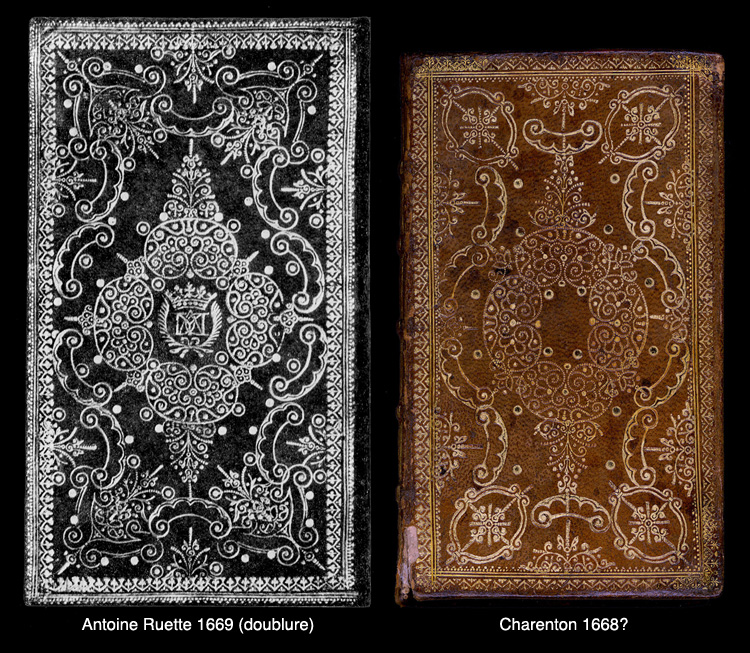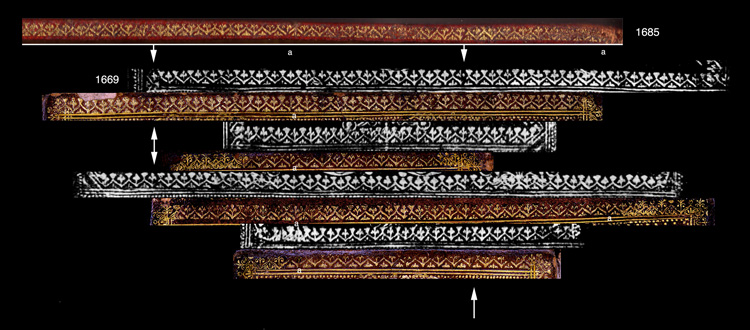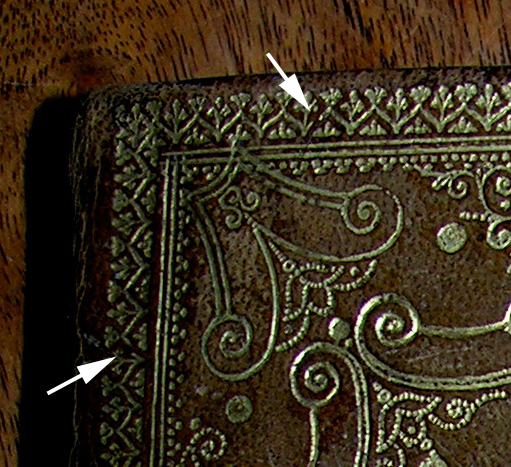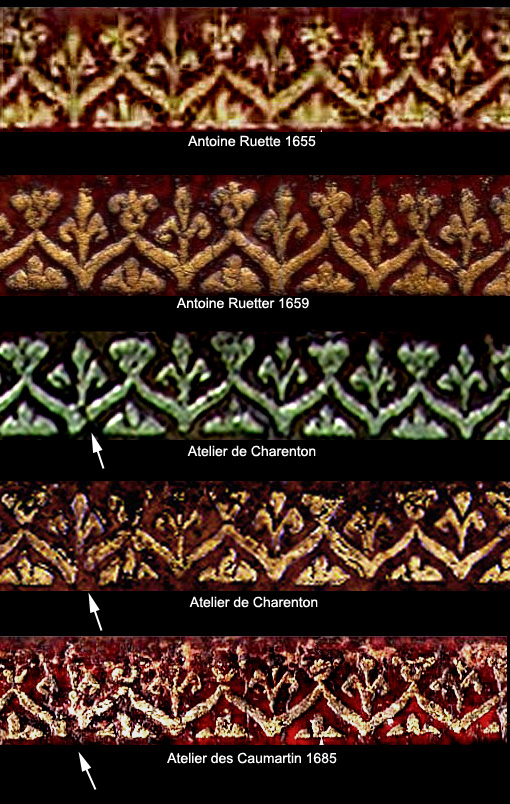

| One can not help but notice the obvious attempt of the atelier de Charenton to closely imitate the work of Antoine Ruette, however a closer examination of the gold tooling reveals that not only did they imitate his tools but they somehow actually acquired Ruette's favorite roulette (ROLL II). |

| At the top of Comparative Diagram 2, I have reproduced a segment of Ruette' ROLL II that I discovered on the board edges of a Caumartin binding that may be from Esmerian's second period of Caumartin activity, i.e. 1685. Below this I compare extracted examples from the 1669 Ruette binding found in Esmerian's catalogue (Volume II, No. 37), with segments from Bromer's Charenton binding. I have previously made another study of this roll (click here to see this page) in relation to the Caumartin examples. Here I discovered that there was a flaw in the Ruette ROLL II that could be traced to the Caumartin examples, this same flaw can be found in Bromer's Charenton example. In fact we can see this same flaw on yet another Charenton binding, a 1666 example, which I show in the illustration below. |


| One can spend hours looking at these enlarged imprints, and often it is hard to make heads or tails of it all, especially working with imperfect reproductions, such as photos where the scale is variable and a certain amount of distortion inevitable. Eventually however, persistent hard work occasionally rewards one with some interesting discoveries. Some time ago I was fortunate enough to acquire a very well preserved Antoine Ruette binding that dates from around 1659. Here we find ROLL II in good condition with no evident flaws. By 1669 however one major flaw has developed and is clearly visible even in the relatively low resolution photos of Esmerian's 1972 auction catalogue. It is this major flaw that we have been looking at in diagrams 1 - 3. However in Comparative diagram 4 we are looking at another flaw which must developed some time after 1669 as it is definitely not present in any of Ruette's bindings (see the enlargement of diagram 2 point (a). It can however be seen developing in the 1666 Charenton binding and yet more severe in the 1668 Bromer example and finally by 1685 is evident as a large rupture. I am tempted to guess that the Charenton bindings are probably closer to the Caumartin second phase than to that of Ruette (1669?) either way the dates of 1666 or 1668 for the Atelier de Charenton bindings are quite out of the question and may easily be one or two decades later. This too would explain the otherwise 'early' appearance of multiple fleuron tools in these bindings |
|
See the next page Antoine Ruette's Charenton bindings Return to the previous page L'ATELIER DE CHARENTON - imprints |
| Go to Digital Alchemy | Click on this link to visit cyclopaedia.org |